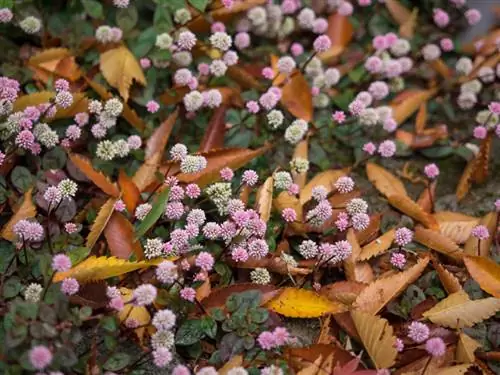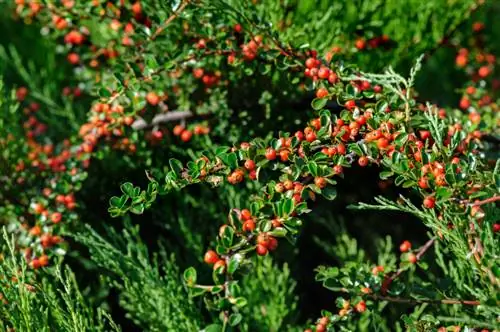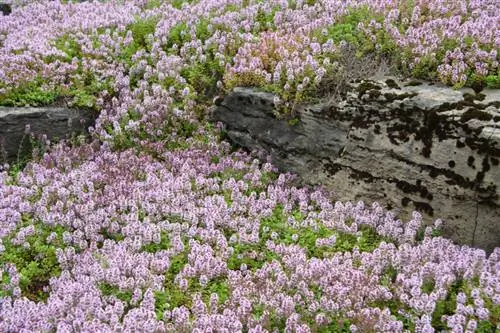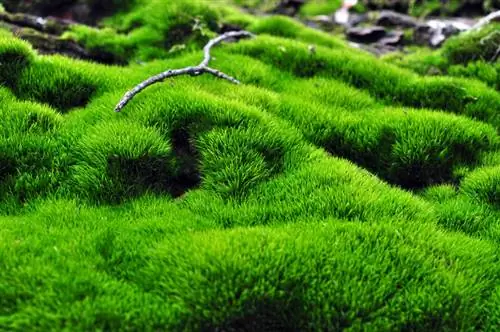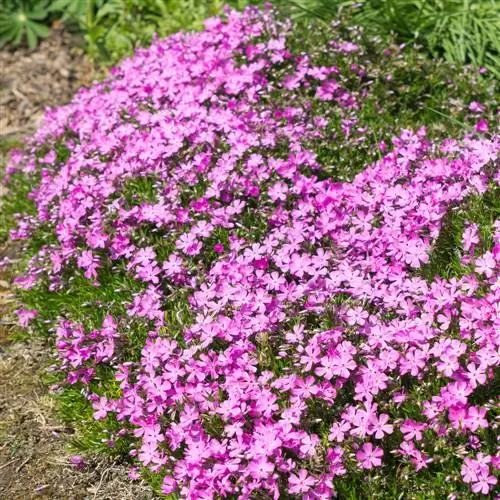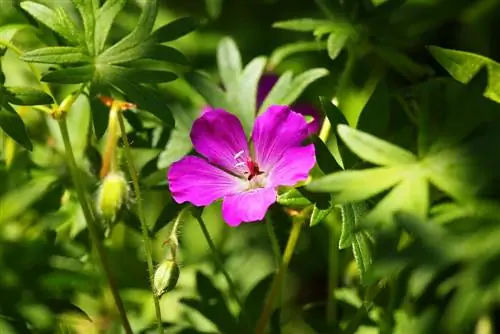- Author admin [email protected].
- Public 2023-12-16 16:46.
- Last modified 2025-01-23 11:20.
The knotweed family is very large: around 48 genera and more than 1200 different varieties are known worldwide. In addition to herbaceous and climbing knotweeds, there are also ground-covering species, of which piebald knotweed in particular is often and popularly planted. Like all knotweeds, this one is extremely easy to grow.
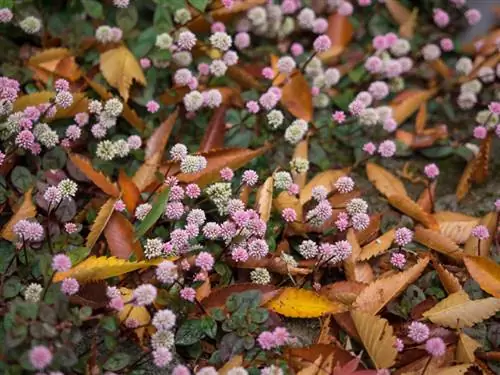
Which knotweed is suitable as a ground cover?
The piebald knotweed (Bistorta affinis) is a popular ground-covering knotweed that forms dense, flat carpets and bears pretty, pink flowers from June to September. It prefers moist, moderately nutrient-rich soils and light-shady to semi-shady locations.
Pretty pink flowers from June to September
The piebald knotweed (Bistorta affinis) forms dense, flat, mostly winter or evergreen carpets, which also boast adorable, pink flower spikes between July and September. The species thrives excellently on moderately nutrient-rich, moist soils and prefers light-shaded to semi-shaded locations. Heat (e.g. in full sun) is generally poorly tolerated. The species is ideal as an area filler.
Interesting varieties
Of course, no two knotweeds are the same. The different varieties differ primarily in terms of their height and the intensity of the flower color.
| Name | Bloom | Flowering time | Leaves | Growth habit | Growth height |
|---|---|---|---|---|---|
| Superbum | Panicle, bright pink | July to September | dark green, lanceolate | cluster-like, bushy | 15 to 30 cm |
| Darjeeling Red | Ear of wheat, pink-dark purple | July to September | lancet-like | clump-forming, ground-covering | 15 to 25 cm |
| Kabouter | Ear of wheat, red and white | July to September | dark green, red autumn colors | low, ground cover | 5 to 20 cm |
| Dimity | Panicle, pink-dark purple | July to September | dark green, red autumn colors | bushy, clump-forming | 15 to 25 cm |
| Donald Lowndes | Ear of wheat, pink | July to September | bright green | flat | 10 to 25 cm |
Undemanding and easy to grow
Bistorta affinis is considered to be quite undemanding and very flowery. Occasional dry phases are usually survived well, but waterlogging is not tolerated - as is the case with many plants. However, knotweed is very fast-growing, which is why you need to check its growth regularly and limit it if necessary. However, it is best to limit growth from the outset, for example by burying a stone bed border as deeply as possible - the species spreads through root runners.
Care for knotweed properly
Like the creeping knotweed, the piebald knotweed also needs a lot of water and should therefore be watered regularly. When it comes to fertilization, incorporating mature mixed compost and other organic fertilizer (e.g. horn shavings (€9.00 on Amazon)) is sufficient. Knotweed is propagated either by division or by shoot cuttings.
Tips & Tricks
If you are looking for a knotweed that grows more like a perennial, meadow knotweed is a good choice. This also has the advantage that its young shoots are edible as a vegetable.

